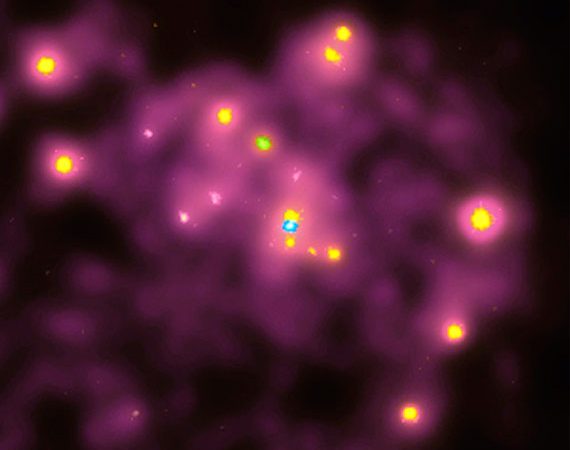The NASA study reports that microscopic black holes could speed through space like cosmic bullets every 1,000 years, and potentially hit Earth.
Earlier this year, NASA scientists predicted that it’s possible that the universe is filled with microscopic black holes that formed before our universe’s existed. The NASA study reported that these black holes could speed through space like cosmic bullets every 1,000 years. Astrophysicists are proposing that our Universe is surrounded by infinite number of black holes that have formed 13.8 billion years ago.
Timothy Brandt, an astrophysicist at the Institute for Advanced Study in Princeton, NJ, said the very lightest, asteroid-size holes would have an apparent size of less than an atom, beyond a certain point, any matter in the Universe squeezed tightly enough will collapse beyond gravitational destruction. “Asteroid-mass black holes, if they were all of the dark matter, might pass through Earth once a millennium or so, but would be very, very hard to detect,” Brandt said. “If you had somebody right there, they might be able to observe one.”
According to Brandt, asteroid-sized black holes would pass Earth approximately every 1,000 years, but they would be difficult to detect because they’re so small. Moon-sized black holes, on the other hand, he says would have a measurable effect on our communications: “We certainly would notice if one passed near Earth, since it would affect the orbits of all of our satellites,” Brandt told Science Alert.
Luckily, this will probably never happen. These black holes would only pass between the Earth and Sun every 100 million years or so, and would statistically take longer than the age of the Universe to pass through Earth. “Though such an event is absurdly unlikely … It would cause some havoc,” Brandt said.
“On the dark matter particle side of the spectrum, the range of possibilities is narrowing down quickly,” Kashlinsky explained. “If nothing is found there, and nothing is found in the black hole theater, then we may be in a crisis of science.”
Meanwhile, some physicists challenge the study, saying are not entirely sure that these microscopic black holes exists. Although there have been several reports that they do, the search to prove they exist has been more difficult than what was previously expected. Those scientists, who are seeking out ancient black holes, including Kashlinsky, think they’re pretty heavy (probably between 20 and 100 times the mass of the Sun).
Supermassive black holes, like one indicated by the blue dot in the NASA X-ray image of the Andromeda Galaxy at the top of the page, are the opposite of the notion of tiny primordial black holes.
Source: Daily Galaxy

































Leave a Comment
You must be logged in to post a comment.